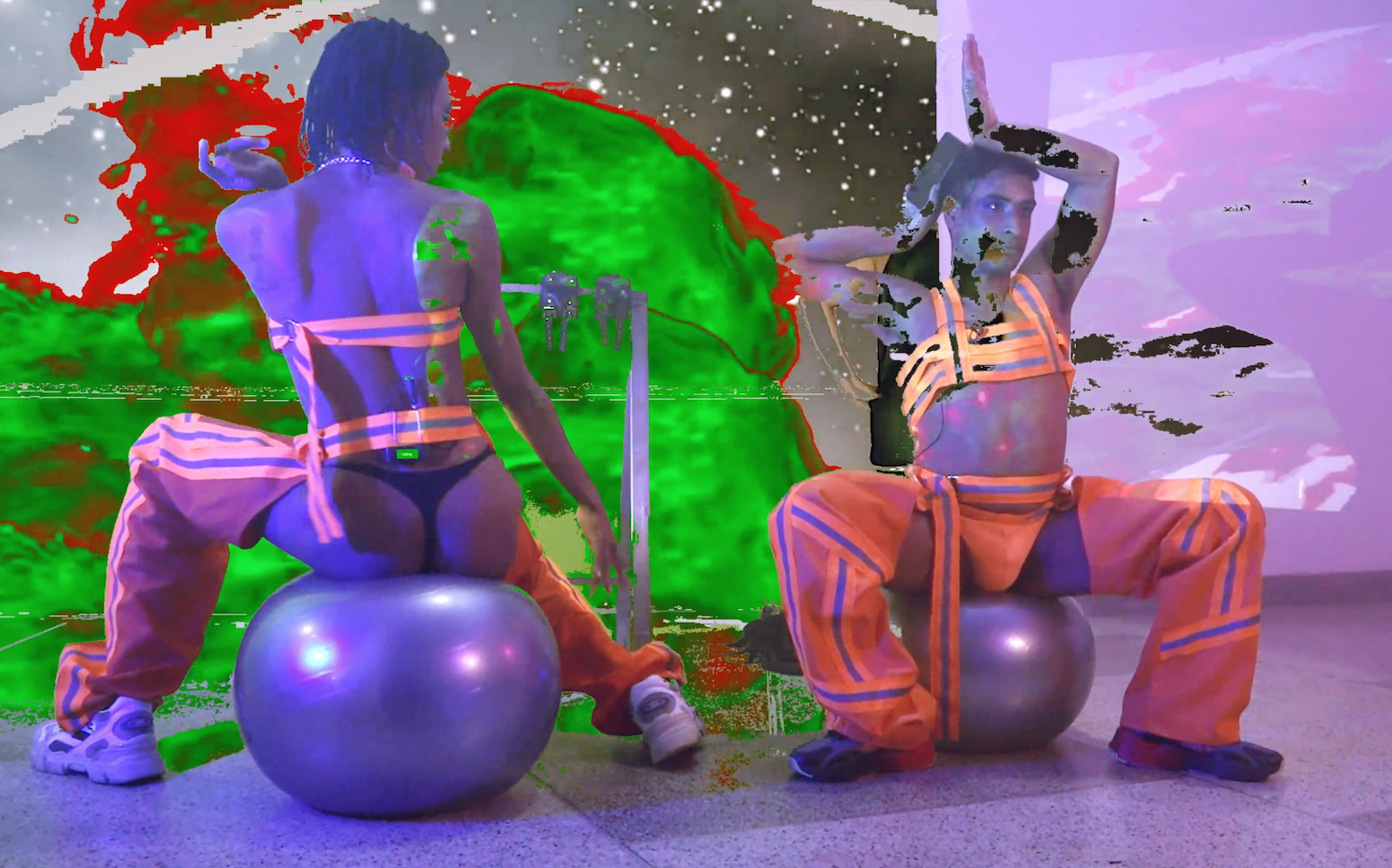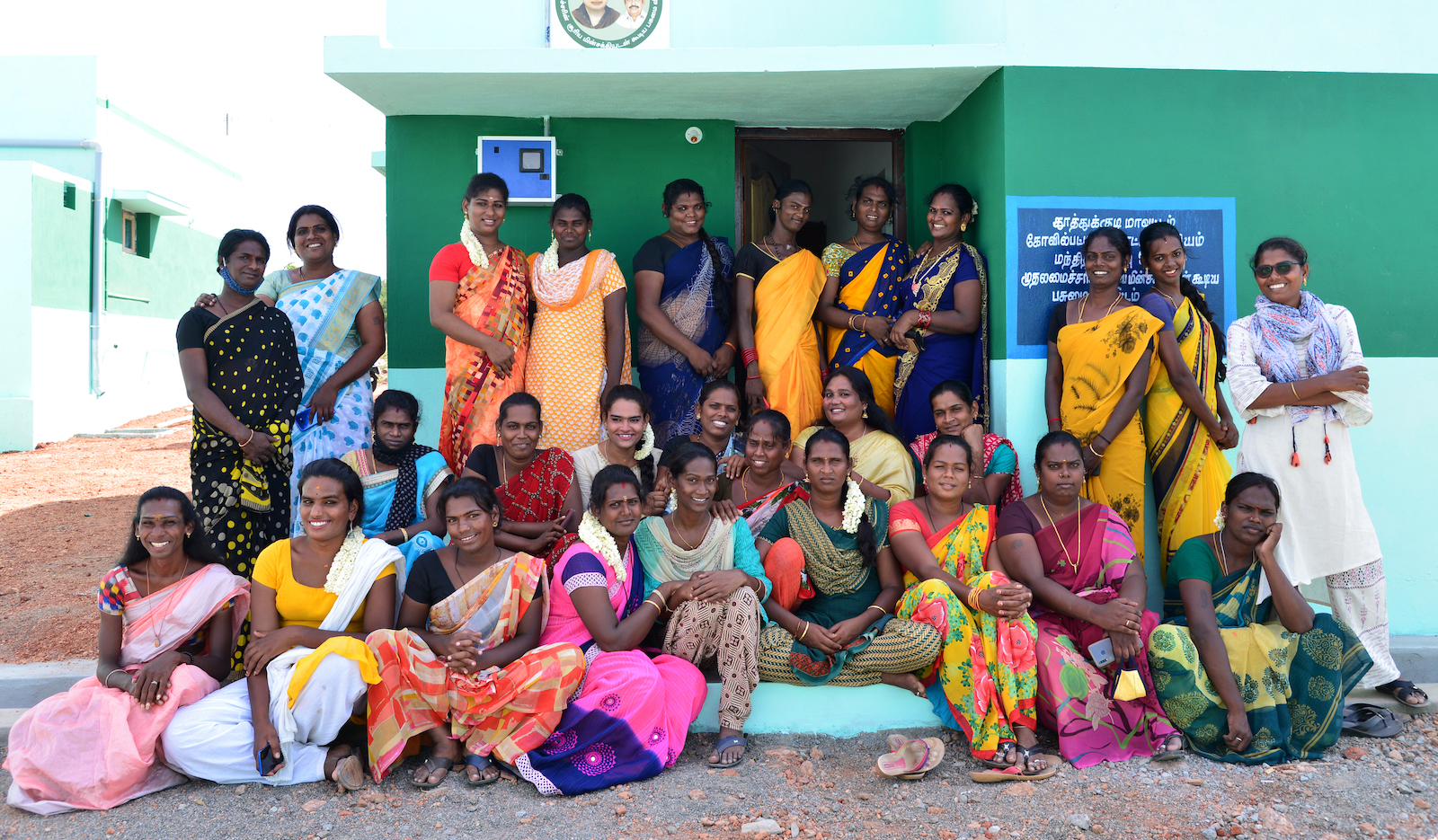"There’s a park across the street, but there’s a wrought iron fence that encloses that park. This is where the girls and I play. Mostly I stand at the fence and watch, as my fellows play ball in the street, and be loud, and be rough, and be sweaty, and I am behind a fence”
says Dr. D-L Stewart, quoted in Dion McKenzie a.k.a. TYGAPAW’s (NYC) operatic techno EP Ode to Black Trans Lives. The tracks take from Stewart’s talk Scenes from a Black trans life, rapidly oscillating between compelling assertions of Black trans* magnificence and testimonies of the violence of whiteness, layered against lush techno beats. Together, they create an embodied experience, narrating the ways that race and gender intersect to shape the lives of Black trans* people, a call to action in support of Black Trans Lives.
The theme of exclusion is omnipresent across their treatise, finding many parallels in the repression of trans*,1 intersex, and gender-deviant people at intersections of caste, colonization, and/or religion. For centuries, colonial and religious empires have criminalized gender-variance2 and imposed the binary as a method of control. Shunned from public life by threats of violence, the modern history of transness can be seen as a history of clandestine communities. Trans* people have long known the importance of creating safety amongst ourselves: finding kinship in living rooms, makeshift ball rooms, anonymous chat servers, jatras, parks, piers, and buffet flats. The most joyous are those modes of gathering organized by trans* people for trans* people, which offer not only safety but also affirmation, and are celebrated within this exhibition.
“We must fight to be seen, as we see from fences, into the play yards we are kept out of”
is heard in scene two of Dion’s EP, alluding to the struggle of trans* organizers to create spaces that offer the validation of being seen in our fullness. In these conditions, the party can become a site for political utterance, collective care, and the formation of pertinent solidarities. Dion is the founder of Fake Accent, a NYC party that was launched to create an inclusive space for trans*-queer partygoers, especially those that share the artist’s Afro-Caribbean heritage. They are part of a milieu of trans* organizers and DJs who are reclaiming club spaces in NYC for the enjoyment and employment of Black people and those of color, including Jasmine Infiniti, Juliana Huxtable, Antpuke, and Pauli Cakes. The figure of the DJ and the music they choose to play are both crucial components in creating familiarity or the possibility to “feel at home”3 within a party space. For too long, white cis-male DJs have occupied the turntables, appropriating the cultures of Black and Indigenous people.

In their performance-video Will Fredo and LoMaasBello trace this history from the drum cultures of the African continent—such as the Ashanti people whose drum rituals travel down a matrilineal lineage—to the gender and sexual liberation organized in San Basilio de Palenque (the first free town in the Americas established by Black Maroons in Colombia in 1603), through the civil rights movements across the Americas that followed, to the underground techno clubs of Detroit in the 1970s. Through the origins of techno and cumbia, they highlight the gap between those who create this art and those who are permitted to monetize it: “Afro music is not only a way of seeking freedom, it’s also a way of transcending this world [...] If the arts of the oppressed have the power to liberate the oppressed, what would happen if the oppressed were liberated?”
Most trans* affirmative spaces in the USA owe their heritage to the House and Ballroom community that was popularized in 1970s Harlem, New York by Crystal Labeija, Pepper Labeija, Dorian Corey, Avis Pendavis, Angie Xtravaganza, Willi Ninja, Paris Dupree, and others, now known as the Immortal Icons. The balls created space for Black and Latinx trans*-queer folks to gather, find community, and amplify their fullest selves through performance in categories that re-claimed ideas of beauty from fashion and the runway, and invented a new style of dance called voguing now popular across the world. The houses, or teams, that compete in these balls are not only cultural units, but also alternative families providing acceptance and care that young queer people do not receive from their birth families. The house family structure sees parallels in the kinnar-hijra-khwaja sara gharanas of South Asia, where gurus adopt young gender-dissidents who have faced violence in their natal homes. The house, or the gharana, is often not a physical space, but a unit that embodies the shelter and stability within the words, holding its members through the physical, hormonal, and social changes of transition.

Over the decades, New York’s ballroom culture has spread across the USA, Mexico, Colombia, France, Australia, Lebanon, and beyond. Bhenji Ra, daughter of Courtney ToPanga Balenciaga and Leiomy Maldonado, brought this tradition back with her to Gadigal Land, Sydney, where she established the House of Slé and the iconic Sissy Ball. The sisters of the House of Slé form the core of Bhenji’s video archival project, Immortal Memories, which centers the acts of remembering and paying tribute to those who have paved the way for us. Through videos of a memorial protest for Mhelody Bruno, conversations with Raquel Willis and Tasya Emmanuel recalling the work of Monica Roberts, interview with Aunty Laura Orsto and Shaniqua Kerinaiua reminiscing about their lineage of Tiwi sistergirls, and other moments, Bhenji reverses the erasure of First Nations and Pacific Islander trans* people, holding temporal space for generations to come.
The art form of voguing, too, has travelled far with Ballroom culture, and has unfortunately been appropriated and capitalized upon too often, such as its usage within Madonna’s 1990 music video “Vogue.” Choreographer, performer, and educator Habibitch reminds the dancefloors of Paris to give credit to vogue’s Black creators, in their lecture-performance Decolonize the Dancefloor. Drawing from their Algerian roots, Habibitch uses dance as a form of pedagogy against racism, patriarchy, and anti-immigration politics, with the motto, “dancing their politics and politicizing their dance.” Their project highlights the importance of sharing knowledge in embodied ways, breaking the hegemony of academic strictures. Defying the limitations of physical borders, 3D art director 7thGrl a.k.a. Liniya takes voguing to far-flung locations in the digital world of Second Life. Through her avatar, Liniya brings visual representation of the Black trans* body into digital spaces that have provided a safer way for queer communities to meet; although, she cautions, spaces like Second Life are not without transphobia and bigotry.

Avant garde music producer Jasmine Infiniti melds the heritage of Detroit techno with ballroom sounds to create the cutting edge of contemporary dance music. Jasmine is also the founder of New World Dysorder, a record label and collective for trans* music producers that pushes for their recognition and employment within nightlife scenes. Bringing together these influences, and combining them with references to survival sex work, Jasmine creates a soundscape for this exhibition-gathering. Dignity through employment and self-sufficiency is also integral to the work of anti-caste trans* activist Grace Banu in India. After seven years of ceaseless work in the southern state of Tamil Nadu, Grace convinced the district administration to set up a livelihood and housing project for trans women, including provisions for 30 women to own land and houses, a landmark step in a movement advocating for the land rights of Dalit people. In a video interview celebrating project’s first year, Grace speaks about the enthusiasm of the new entrepreneurs and the respect they have gained through this collective departure from begging and sex work as their only sources of income.

While traversing through these moments of communal resilience, Jonathan Eden reminds us to consider intimate access4 for disabled, neuro-divergent and chronically-ill trans* siblings, a part of our community that often still feels unwelcome at gatherings by and for dissident people. Jonathan takes us furthest in the future, imagining a party that centers the act of rest, playing host to those of us who glitch, recede into the shadows, are seen as monsters, and might be from a different planet altogether. An aligned surrealist liberation is seen in Dion McKenzie’s paintings that reimagine the children’s cartoon Teletubbies as Technotubbies, re-appropriating the legacy of techno, calling upon us to take over the dancefloor before the world ends. In their talk, Dr. D-L Stewart says,
“My body is a sovereign country, my first site of resistance. My body defies the restrictions of a society defined by boxes and binaries, and are you a boy or a girl? Independent of such conventions my body clings instead to the long ago lore that understood its magic. I contain multitudes.”
We have learned to survive, to thrive, to invent ourselves through these modes of coming together, moving together, laughing, crying and holding each other. These acts of embellishment, transfiguration, performance, and kinship are not just frivolous, but rather as Marlon Bailey has theorized, they are acts of work, of labor,5 that allow for whole new futures to be written. As trans* people, we are implicitly trained to hold contradictions, and perhaps the most relevant in this moment of global urgency is the ability to see autonomy and collectivity as inextricable parts of the same sovereignty.
In an earlier iteration of the exhibition materials, quotes from the EP 'Ode To Black Trans Lives' were incorrectly attributed to music producer Dion McKenzie. These quotes are from Dr. D-L Stewart's talk "Scenes from a Black trans life," quoted in the aforementioned EP. The curators deeply regret the miscredit.
After Party Collective (Shaunak Mahbubani & Vidisha-Fadescha)
Open Call Exhibition
© apexart 2021
1. Trans* denotes an expanded definition of the transgender umbrella that includes all those whose gender identities do not correspond to their gender assigned at birth — irrespective of medical intervention — especially including identities such as non-binary, genderfluid, genderqueer, agender, and others.
2. Through laws such as the Criminal Tribes Act 1871 (South Asia) and Masquerade Laws, Three-Article Rule, Loitering for the Purpose of Prostitution law, etc (New York State / USA).
3. Sara Ahmed, Queer Phenomenology: Orientations, Objects, Others, (Durham: Duke University Press, 2006), p. 8.
4. Mia Mingus, “Access Intimacy: The Missing Link,” Leaving Evidence (blog), May 5, 2011, https://leavingevidence.wordpress.com/2011/05/05/access-intimacy-the-missing-link/.
5. Marion M. Bailey, Butch Queens Up in Pumps: Gender, Performance, and Ballroom Culture in Detroit (Ann Arbor: University of Michigan Press, 2013).

